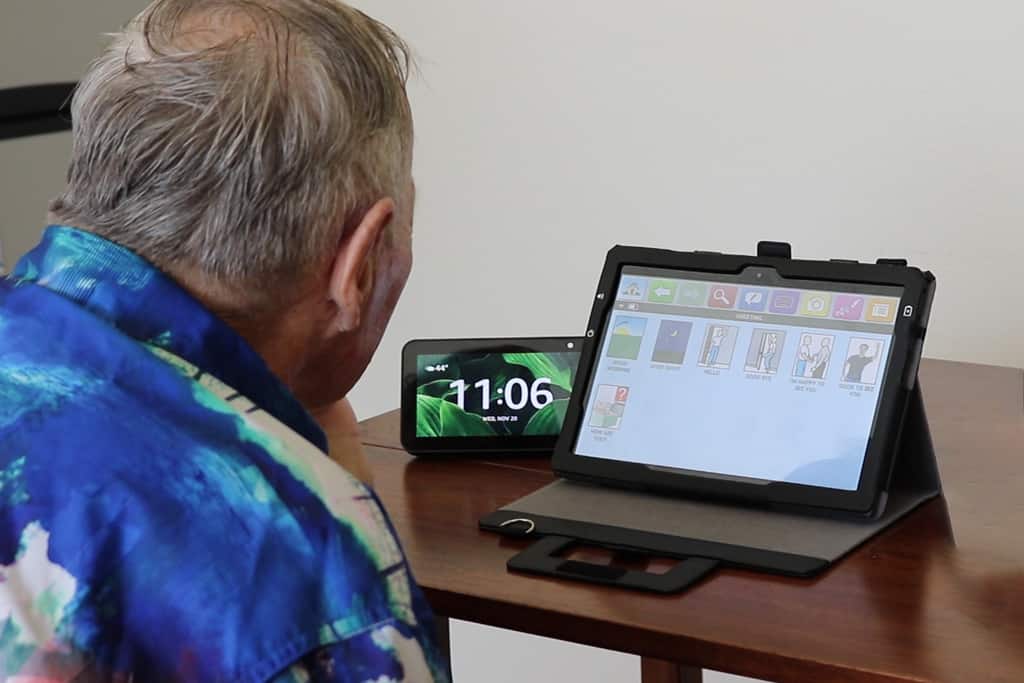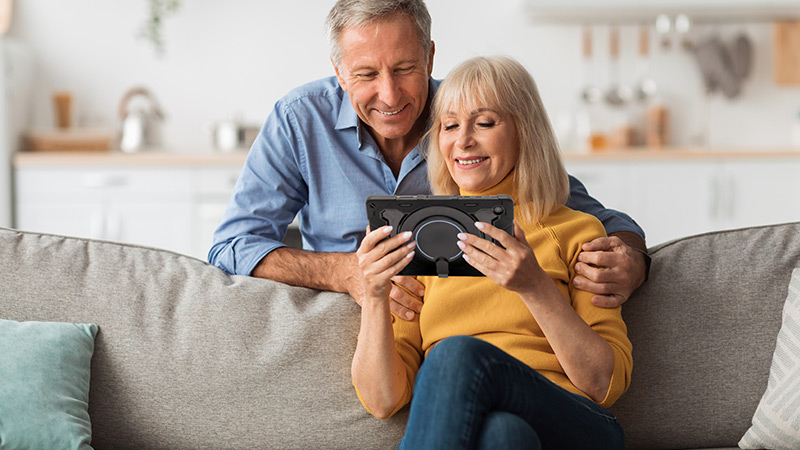
Alexa, Call My SLP: Using Smart Tech to Boost AAC.
Key Takeaways
- Pairing AAC with a smart home speaker can improve motivation to use a device
- The AAC + smart home speaker combination increases user independence with environmental controls and can improve social engagement
- Start small with a dedicated page of meaningful smart home icons
Summary
Smart home assistants, such as Amazon Echo and Google Home, are becoming common parts of many households. This presents a unique opportunity for AAC users to use these voice-operated systems by programming commands into their device. By combining the powers of AAC with smart home assistants, AAC users are likely to experience benefits in four areas:
- Motivation and entertainment: For many, the idea of this is simply rewarding and fun. It is motivating for users to be able to use the newest technology via their devices. Furthermore, there are many fun commands that can be programmed, including telling jokes or checking sports scores.
- Social and community engagement: With the help of a smart home assistant, AAC users will find it easier to make phone and video calls to stay connected. They can also stay engaged with the community by checking the news, and use the system’s schedule feature to get their day started.
- Environmental controls: If the user has the right tools, a smart home assistant can control everything from the lights to the TV to the thermostat. This can greatly increase an AAC device user’s independence.
- Medical/emergency support: Pairing AAC with a smart home assistant can be a large benefit. An easy emergency or panic button can be created instructing the smart home assistant to call for emergency services.
Although it can feel intimidating to combine the technology, it’s easy to start small. Identify a couple of meaningful voice commands and create a dedicated page to make the connection easy.
Incorporating the Research into Clinical Practice with Lingraphica
Lingraphica AAC devices are ready to communicate with a smart home assistant right away. They even come with a pre-programmed smart home assistant page with some of the most common voice commands – you can find it in the icon library under technology.
When using a Lingraphica AAC device with a patient, ask if they use a smart home assistant. If so, identify some of the things that are important to them – not only will this help you customize the device, but you can also think of ways to incorporate the smart home speaker to increase motivation and independence. This could be something simple like hearing the day’s weather report or checking a favorite team’s score.
If your patient seems hesitant to use a device to communicate with others, using a device to communicate with a smart home assistant can be a great way to “break the ice.” Using the device to interact with a smart home speaker removes some of the pressure and any embarrassment your patient might feel at using a device with friends and family. Communicating with a smart home assistant can help build the skills, confidence and comfort that the user needs to begin communicating in other contexts.
About Contributor
Lingraphica helps people with speech and language impairments improve their communication, speech, and quality of life. Try a Lingraphica AAC device for free.













